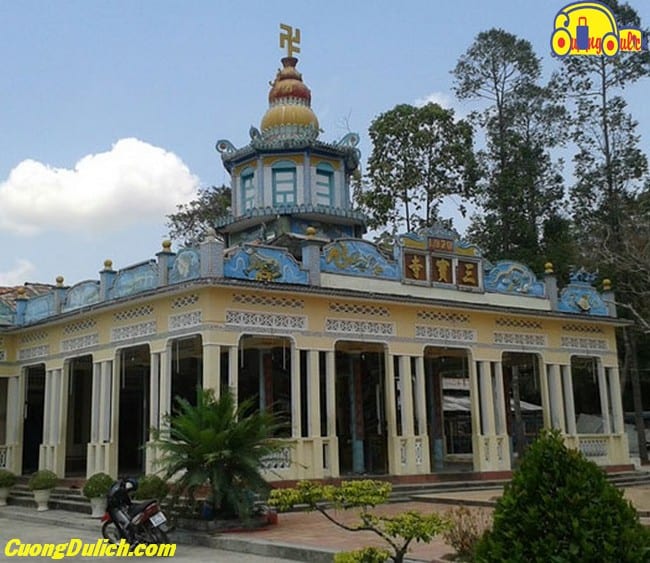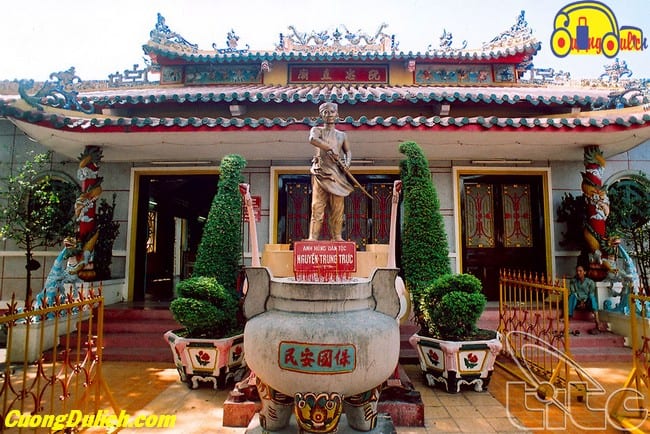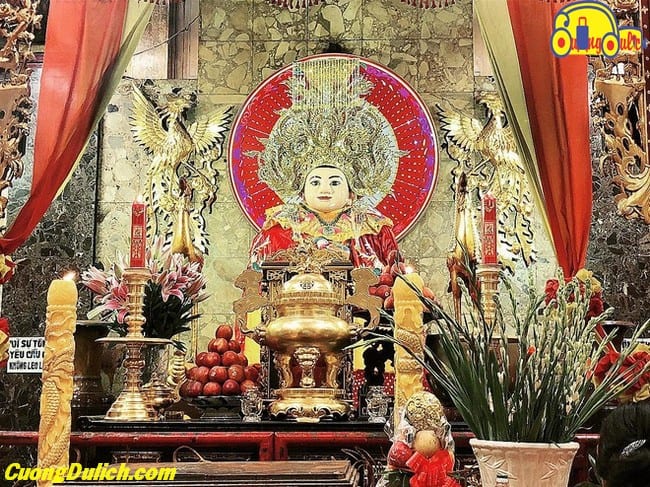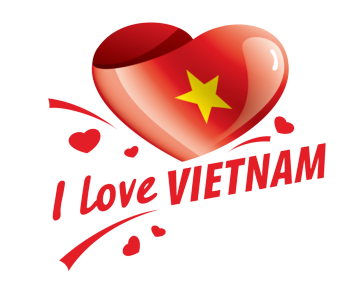Religion is a historical product closely linked to specific historical conditions. Therefore, religion in southern Vietnam (southern region) also has its own distinctive features. Let’s explore religion in Southern Vietnam to see what makes it special.
As a multicultural land, where Vietnamese, Khmer, Chinese, Cham, and other ethnic groups have settled, Southern Vietnam has become a favorable environment for the development of religions originating from the North, Central regions, or adapted from indigenous and immigrant communities, as well as from the French. Therefore, this is the most diverse region in terms of beliefs and religions in Vietnam, with a full range of four types of polytheistic and monotheistic religions, indigenous and foreign. Therefore, the spiritual life of the people in Southern Vietnam is quite complex, influenced by various religions of different origins.

Various Polytheistic Religions
Polytheistic religions include natural spirit worship: the most common being the worship of Earth Deity – Wealth Deity, Kitchen Gods, Sky God (family), Whale God (seaside temple), Thanh Hoang Bon Canh, Mountain Deity (inland temples), Lady of the Realm, Holy Mother of the Mountain (temples on Sam Mountain, Ba Den Mountain, and scattered locations), Five Female Emperors (temples). In addition, some places also worship Jade Emperor, Mother Buddha Diu Tri, Nine Heavenly Fairies, Ong Ta, Ha Ba – Thuy Long, Twelve Mothers, Ong To Ba Nguyet, etc.
Differences between Polytheistic Religions in the North and South
Unlike the origin of Thanh Hoang as a human deity in the North and Central regions, Thanh Hoang Bon Canh in Southern Vietnam is a natural spirit, only having a title without a background story, miracles, and only some of them have the divine mandate of the court with the common name “Thanh Hoang Bon Canh”.
Next are the religions that worship human deities: the most common being ancestor worship (death anniversaries, ancestral worship, ritual offerings), Quan Thanh De Quan (family), Lady Thien Hau, Ong Bon (temples), occupational ancestors. In addition, some places also worship human ancestors (Nine hundred families), historical figures – national heroes: Nguyen Huu Canh, Nguyen Van Thoai, Le Van Duyet, Tran Thuong Xuyen, Truong Dinh, Nguyen Trung Truc, Vo Duy Duong, Doc Binh Kieu, Phan Cong Hon, Thay Thim, revolutionary martyrs (temples, shrines, palaces), etc.
Furthermore, since 1954, people from Northern Vietnam have also introduced some places in Southern Vietnam (such as Ho Chi Minh City) to worship human deities: Hung Vuong Ancestor, Hai Ba Trung, Saint Tran, etc.
Various Monotheistic Religions
Monotheistic religions include ethnic religions: Caodaism, Hoa Hao Buddhism, Four Debts of Gratitude Religion. Caodaism was founded in 1926 in Tay Ninh, combining Buddhism with Daoism, Confucianism, Catholicism, Mother Goddess worship, with 2.4 million followers nationwide (2009), most concentrated in Tay Ninh, Ben Tre, Long An, Tien Giang. Hoa Hao Buddhism was founded in 1939 in An Giang, based on Buu Son Ky Huong Buddhism, combining Buddhism with folk beliefs, recognized as a religious organization in 1999, currently with about 1.3 million followers in the Southwest, most concentrated in An Giang.

Đạo Tứ Ân Hiếu Nghĩa
Đạo Tứ Ân Hiếu Nghĩa was founded in 1867 in An Giang, officially recognized as a religious organization in 2010, currently has about 78,000 followers in the Southwest, most concentrated in An Giang. In addition, some people also believe in other sects originating from Buddhism such as Buu Son Ky Huong (established in 1849 in An Giang, with about 15,000 followers in the Southwest), Huynh Dao (Chau Doc town, An Giang), Ong Tran sect (Long Son commune, Vung Tau city, Ba Ria-Vung Tau), Coconut sect (Phung islet, Tan Thach commune, Chau Thanh district, Ben Tre), etc.
World religions
Next are the world religions: Northern Buddhism, Catholicism, Protestantism. Continuing the tradition of the people in the Central and Southern Central regions, the people in the South also prioritize Buddhism, building pagodas across the plains, especially in the remaining hilly areas. In total, there are 9 organizations and sects including Southern Buddhism, with about 10,000,000 followers nationwide (2010). Catholicism and Protestantism also have a large number of followers, mostly migrants from the North.
Spiritual centers in the South
Corresponding to the diverse religious forms is a dense network of spiritual centers. Many of these spiritual centers are also historical and cultural relics of the South such as Linh Son Thanh Mau temple in Tay Ninh; Ba temple in Binh Duong; Nguyen Huu Canh temple in Dong Nai; Le Van Duyet tomb, Ong temple, Ba temple in Ho Chi Minh City; Hoang Gia tomb, Truong Dinh tomb, Tu Kiet tomb in Tien Giang; Thoai Ngoc Hau tomb and temple, Ba Chua Xu temple in Chau Doc; Nguyen Trung Truc temple in Rach Gia; etc.

Religious Festivals in Southern Vietnam
Corresponding to the richness in production activities and religion, the festivals of the people in Southern Vietnam are also very diverse, including all four types of traditional festivals in Vietnam: agricultural and aquatic festivals; festivals commemorating national heroes; religious festivals; and mixed festivals. All of them carry the characteristics of Southern Vietnam even though many festivals originate from Central Vietnam. In village temples, there are often Ky Yen festivals held at the beginning and end of the year, to express gratitude to Thanh Hoang Bon Canh, the deities, and the ancestors who have contributed to the well-being and prosperity of the people.
Nghinh Ong Festival
Along the coastal areas, the Nghinh Ong Festival is the most important cultural and spiritual event for the residents. In Ba Ria – Vung Tau, where there are 10 whale temples, the most in the South, besides the Nghinh Ong Festival, there is also the Le Co Long Hai Festival from the 10th to the 12th of the lunar month to worship the Mother Goddess and the sea deities. In Ben Tre, the Nghinh Ong Festival is held on the 16th of the 6th lunar month every year in coastal villages of Binh Dai and Ba Tri districts. On this day, all fishing boats gather to pay respects to Ong, offer sacrifices, enjoy festivities, and feast. In Can Gio (Ho Chi Minh City), Vam Lang (Tien Giang)… there are also grand Nghinh Ong Festivals held annually.
Commemoration Festivals for Historical Figures
The festivals commemorating historical figures who contributed to land development such as Nguyen Huu Canh, Nguyen Van Thoai (Thoai Ngoc Hau), Le Van Duyet, Tran Thuong Xuyen… and the festivals honoring national heroes like Truong Dinh, Nguyen Trung Truc, Vo Duy Duong, Doc Binh Kieu, Phan Cong Hon… are all solemn festivals organized by the people, with the support of local authorities.

Religious Festivals in Southern Vietnam
Religious festivals in Southern Vietnam include the Linh Son Thanh Mau temple festival on Ba Den Mountain; the Via Ba Chua Xu festival on Sam Mountain; traditional festivals such as Tet Nguyen Dan, Tet Doan Ngo; annual festivals of Buddhism, Caodaism, Hoa Hao Buddhism, Christianity, Protestantism… Among them, the largest is the Via Ba Chua Xu festival on the 23rd of the 4th lunar month on Sam Mountain, Chau Doc, a typical pilgrimage site in the South, attracting 2.9 million pilgrims and tourists annually (2008).
Above are some details about religions in Southern Vietnam. If you know of any other religions or festivals in Southern Vietnam, feel free to share with us below.
